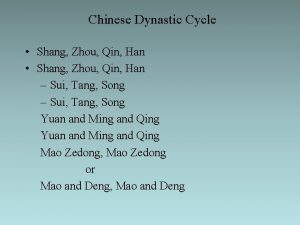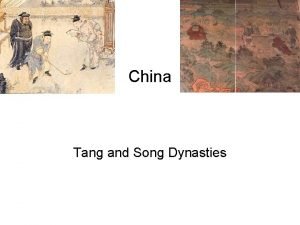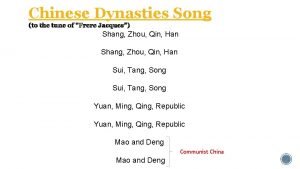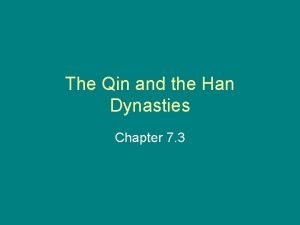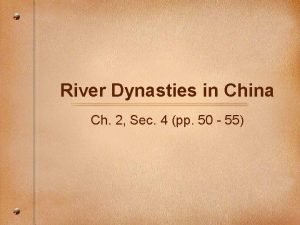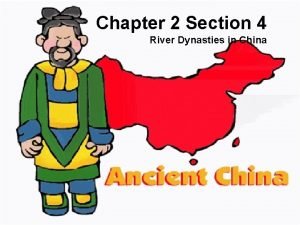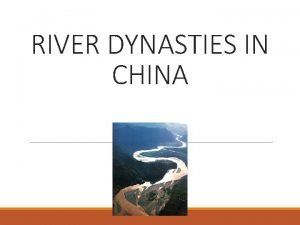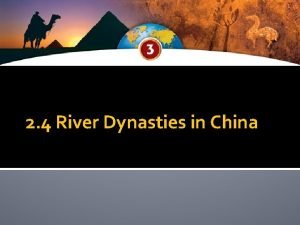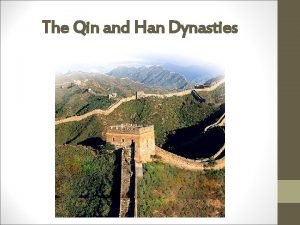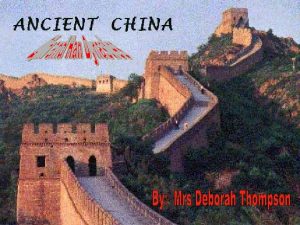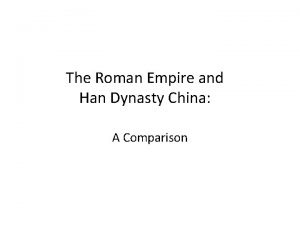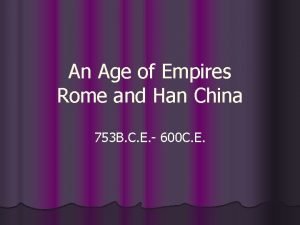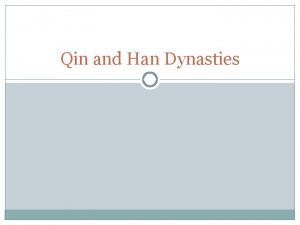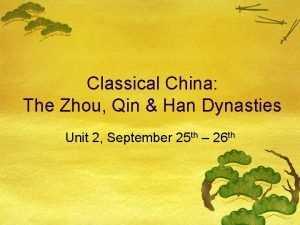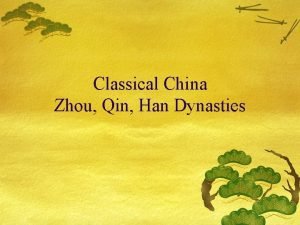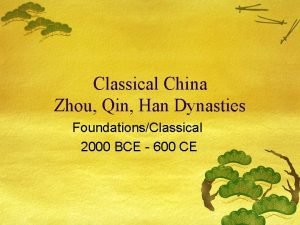Classical China The Qin and Han Dynasties Qin












- Slides: 12

Classical China The Qin and Han Dynasties

Qin Dynasty

Qin Dynasty China is unified under Qin Centralized power ◦ Non-hereditary bureaucratic system Harsh Legalism ◦ Standardized legal codes, coinage Political/Economic Characteristics

Qin Dynasty Former nobility lost all power ◦ Emperor had complete control over people Formed “Groups” ◦ 5 -10 family units which were responsible for wrongdoings of any individual within the group Social Characteristics

Qin Dynasty Standardized language & measurements Roads, irrigation canals Great Wall Terra Cotta Soldiers ◦ Army of 6000 pottery soldiers Technological Characteristics

Han Dynasty 220 BCE-220 CE

Han China Well organized bureaucracy based upon Confucian ideals and education Decentralized government Civil Service Exam Continued standardization of coins & measures Political/Economic Characteristics

Han China Emphasis on family ancestors; patriarchal Reliance on landed gentry Social Characteristics

Han China Engineering accomplishments: ◦ Roads, canals, bridges, the Great Wall Silk Weaving Technological Characteristics

Han China Confucianism, Daoism, native gods Introduction of Buddhism ◦ Came to China from India along the Silk Road Religious Characteristics

The Silk Road 7000 mile route that connected China, Central Asia, Northern India, and the Roman Empire Caravans linked trade between China & Mesopotamia Interactions

Decline of Han China Infighting among ruling elites Inequitable distribution of land-tax burden fell to peasants not to large landowners Series of peasant rebellions Generals usurp political power – become warlords 220 CE warlords split empire-3 kingdoms Emigration of nomadic tribes
 Dynastic cycle in china
Dynastic cycle in china Ming and qing dynasty venn diagram
Ming and qing dynasty venn diagram How did the sui and tang dynasties reunite china
How did the sui and tang dynasties reunite china Chinese dynasty song frere jacques
Chinese dynasty song frere jacques Qin han
Qin han Chapter 2 section 4: river dynasties in china answer key
Chapter 2 section 4: river dynasties in china answer key River dynasties in china chapter 2 section 4
River dynasties in china chapter 2 section 4 River dynasties in china
River dynasties in china River dynasties in china
River dynasties in china Four chinese dynasties
Four chinese dynasties How did qin shihuangdi unite the states of northern china?
How did qin shihuangdi unite the states of northern china? Roman empire china
Roman empire china Rome and han china
Rome and han china
